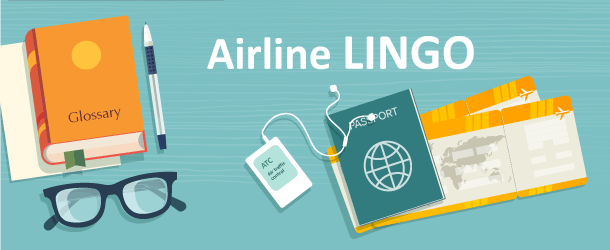
If you’re new to making airline arrangements or booking award tickets, you may not be familiar with all of the words and terms the airlines use. Here’s a quick reference guide to some of the lingo you should understand.
Airline alliance—There are three major airline alliances: oneworld, Star Alliance, and SkyTeam. Each alliance has many member airlines. For example, American Airlines is a member of the oneworld alliance. You can use miles from one airline to book an award ticket on any airline in its alliance.
Airline hub—Every airline has one or more hubs. These are airports that the company uses as a major transfer point and from which a majority of their flights depart.
Airport code—This is the three-digit code that signifies each airport. For example, Newark Liberty Airports airport code is EWR.
ANA tool—This refers to ANAs online award booking engine that also shows inventory for most Star Alliance airlines.
ATC—Air traffic control
AVOD—Audio and Video On Demand. This refers to the on-board entertainment system.
BIS—Butt-in-seat miles. These are miles that you earn by actually flying and not by credit card spending or other means.
BOGO—Buy one, get one free.
Connecting flights—This refers to an itinerary in which you have to change planes in order to reach your destination.
Contract of carriage—This is the contract with the airline that you agree to abide by. The contract spells out rules of travel and your rights.
Direct flight—A direct flight is one that flies from one city to another with the same flight number, but makes a stop in between. Not to be confused with a nonstop flight.
E+—Economy Plus means seats that are a bit roomier than traditional economy seating.

E-ticket—When a reservation is confirmed, the airline assigns each passenger an e-ticket number which includes the airlines three-digit ticketing code as well as a series of additional numbers. Every passenger traveling should have a unique e-ticket number. This number is attached to the itinerary and tracks data such as the contract of carriage, fare rules, how you paid for the ticket, where/how it was issued, baggage allowance, etc.
Fare class—Fare class, also known as booking class, is the one-letter code each airline uses to refer to the class of service (economy, economy plus, business, first class) and any restrictions on the ticket. For example, if you’re looking to book a first-class award ticket on American Airlines, you’re looking for a Z fare class.
Flight deck—Refers to the aircrafts cockpit.
Great Circle Route—A flight that passes over the polar regions follows the Great Circle Route.
Ground stop—Air traffic control sometimes puts an airport on what’s called a ground stop. This means that no aircraft can depart from or to this destination until the traffic backlog or bad weather clears.
IFE—In-flight entertainment.
Long-haul flight—A flight that’s more than 7,500 miles with no stop between two points.
Layover—A layover occurs when you cannot get a nonstop or direct flight. Instead, your flight departs from your home city and stops for a certain amount of time at a second airport. You must get off the plane and wait for a second flight with a different flight number to continue to your destination.
Metal—If you hear someone say, “I’m flying AA metal,” it means the passenger is flying on an American Airlines flight on an American Airlines aircraft. This term does not apply if the passenger was flying on an American Airlines flight operated as a codeshare on another carriers aircraft.
Minimum connecting time—This is the shortest amount of time that is allowed to change planes at an airport. If the connecting flight you want is too close to the time your first flight lands, you won’t be able to book that second flight since its considered an “illegal” connection.

Nonstop flight—This refers to a flight with no stops. The term is often confused with direct flight.
OLCI—Online check-in.
Open jaw—This is a roundtrip route where the passenger departs from one city and arrives at their destination, but returns home from a different city. Open jaw tickets are useful for cruise passengers who’ve booked a voyage that starts in one city and ends in a different city.
PNR—A PNR is the passenger name record, also referred to as a record locator, confirmation number, or reservation number. The PNR is a mix of six numbers and/or letters, such as RXT2L3.
Stopover—A stopover allows you to break up your trip with a stop. For example, your itinerary from New York to Tahiti might include a stop in Los Angeles on the way there to break up the journey. In this case, Los Angeles is the stopover.
Transcon—Transcontinental flight crossing the United States from one coast to the other.
